On the 547th death anniversary of German inventor Johannes Gutenberg, we look back at his contributions to the mechanisation of the printing process, which went on to create a revolution...
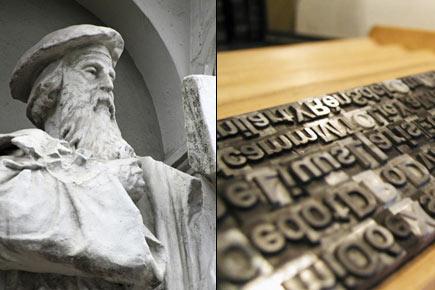
Johannes Gutenberg, Gutenberg printing press, Gutenberg Bible, mechanical printing press, movable type printing, printing press, invention of the printing press, Special feature, Johannes Gutenberg death anniversary
Johannes Gutenberg invented the movable type printing technology in Europe sometime around 1450. Among his Gutenberg's many contributions to printing are
- The invention of a process for mass-producing movable type
- The use of oil-based ink
- The use of a wooden printing press similar to the agricultural screw presses of the period.
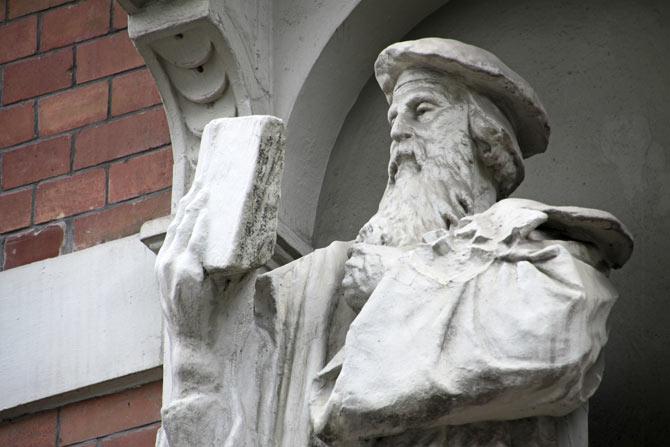
A sculpture of Johannes Gutenberg
Gutenberg combined the above elements into a practical system which allowed the mass production of printed books and was economically viable for printers and readers alike. His method for making type is traditionally considered to have included a type metal alloy and a hand mould for casting type. The alloy was a mixture of lead, tin, and antimony that melted at a relatively low temperature for faster and more economical casting, cast well, and created a durable type.
ADVERTISEMENT
The usage of the screw press, which enabled direct pressure to be applied on flat-plane and used in a wide variety of tasks was popular during Gutenberg's time. Introduced by the Romans in the 1st Centry AD, it was commonly employed in agricultrual production, which included, pressing wine grapes, olive oil fruit, an integral part of mediterranean and medieval diet. The device was also used as a cloth press for printing patterns. Gutenberg may have also been inspired by the paper presses which had spread through the German lands since the late 14th century and which worked on the same mechanical principles.
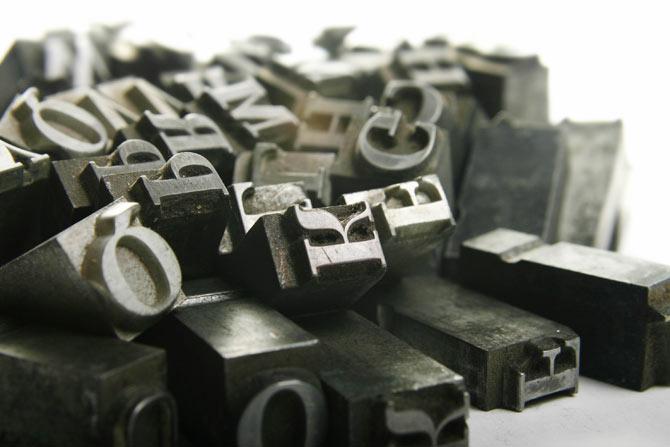
(Above and below) Movable type alphabet blocks used in Johannes Guteberg's printing process
Johannes Gutenberg adapted the construction so that the pressing power exerted by the platen on the paper was now applied both evenly and with the required sudden elasticity. To speed up the printing process, he introduced a movable undertable with a plane surface on which the sheets could be swiftly changed.
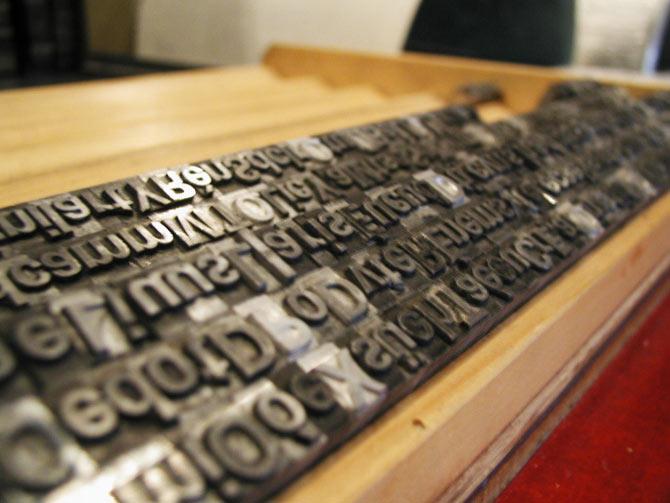
To create these lead types, Gutenberg used what is considered one of his most ingenious inventions, a special matrix enabling the quick and precise molding of new type blocks from a uniform template. His type case is estimated to have contained around 290 separate letter boxes, most of which were required for special characters, ligatures, punctuation marks, and so forth.
Gutenberg is also credited with the introduction of an oil-based ink which was more durable than the previously used water-based inks. As printing material he used both paper and vellum (high-quality parchment). In the Gutenberg Bible, Gutenberg made a trial of coloured printing for a few of the page headings, present only in some copies. A later work, the Mainz Psalter of 1453, presumably designed by Gutenberg but published under the imprint of his successors Johann Fust and Peter Schöffer, had elaborate red and blue printed initials.
The new era in print ushered in by the Internet is a distant mirror to Gutenberg's work which similarly revolutionized the printing process.
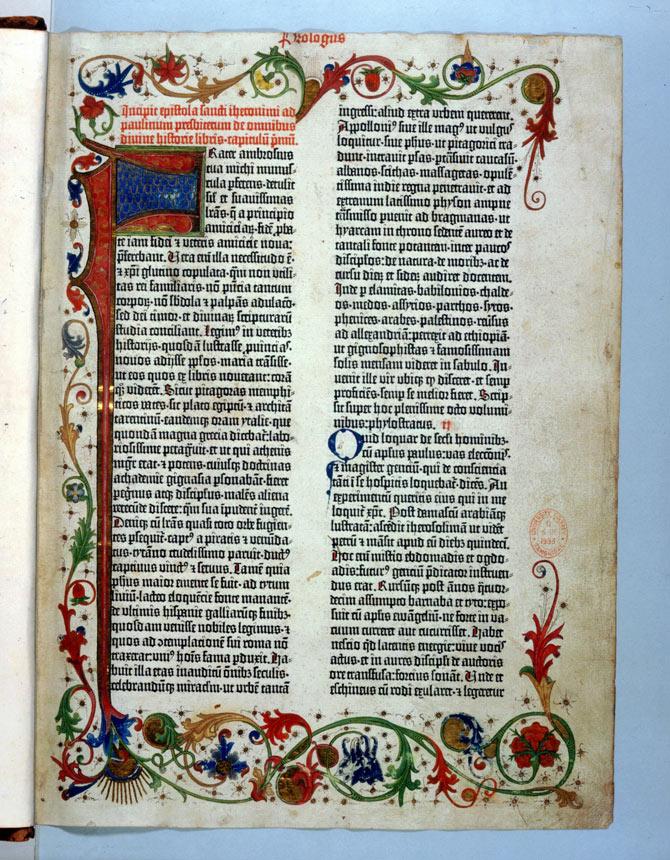
A page from the Gutenberg Bible, which has been acclaimed for its high aesthetic and technical quality
For years, book printing was considered a true art form. Typesetting, or the placement of the characters on the page, including the use of ligatures, was passed down from master to apprentice. In Germany, the art of typesetting was termed the "black art", in allusion to the ink-covered printers. It has largely been replaced by computer typesetting programs, which make it easy to get similar results more quickly and with less physical labor. Some practitioners continue to print books the way Gutenberg did. For example, there is a yearly convention of traditional book printers in Mainz, Germany.
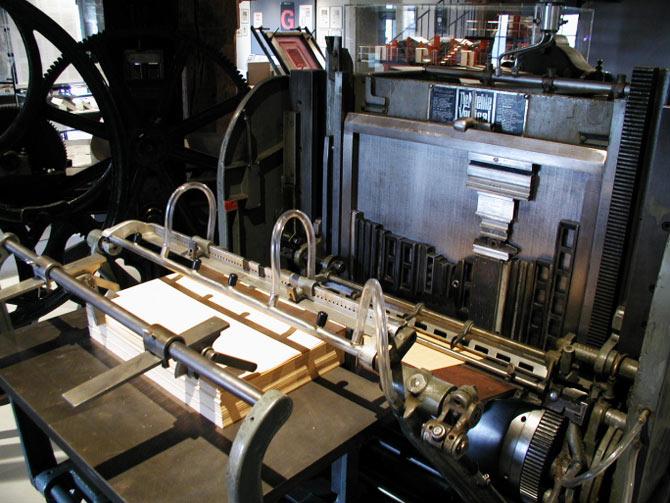
A Gutenberg-style printing press on display at the Gutenberg museum
At the dawn of the Industrial Revolution, the mechanics of the hand-operated Gutenberg-style press were still essentially unchanged, although new materials in its construction, amongst other innovations, had gradually improved its printing efficiency. By 1800, Lord Stanhope had built a press completely from cast iron which reduced the force required by 90%, while doubling the size of the printed area. With a capacity of 480 pages per hour, it doubled the output of the old style press.
In the 19th century, the replacement of the hand-operated Gutenberg-style press by steam-powered rotary presses allowed printing on an industrial scale, while Western-style printing was adopted all over the world, becoming practically the sole medium for modern bulk printing.
 Subscribe today by clicking the link and stay updated with the latest news!" Click here!
Subscribe today by clicking the link and stay updated with the latest news!" Click here!







